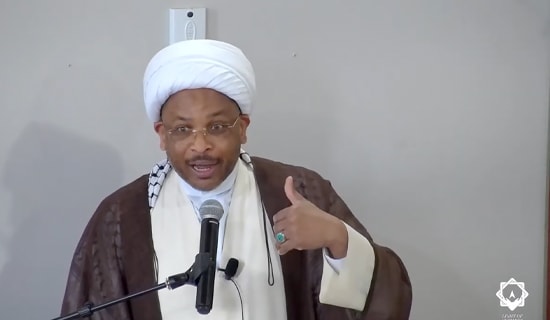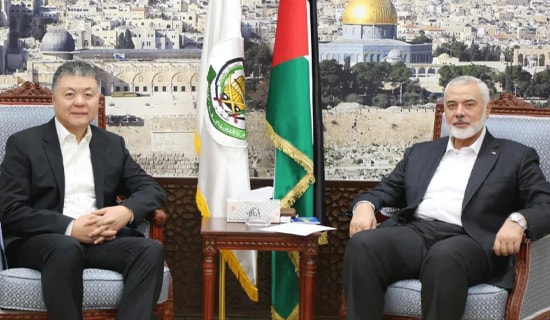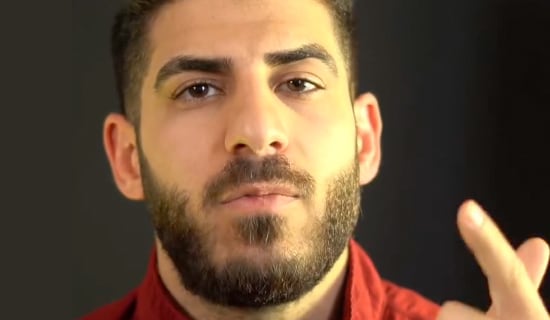The London-based Arabic daily, Al-Hayat wrote an exposé about the six Egyptians who were included in the American list of 27 individuals and Islamic organizations involved with the September 11 terrorist attacks.
Number four on the list is lawyer Tharwat Sallah Shahata, a law partner of Muntasir Al-Zayyat, the lawyer of the blind Sheikh Umar Abd Al-Rahman who was convicted in the 1993 World trade bombing. In April 2001, MEMRI published a warning that Al-Zayyat made to the U.S. that if it did not release Sheikh Umar Abd Al-Rahman there would be "an explosion against American interests."
Following are:
Al-Hayat's Report on the Egyptians on the US's "List of 27"
"Abu Hafs Al-Masri ["Abu Hafs" the Egyptian], whose name was included on the American list, but whose real name is Subhi Abu Sitta, took Al-Rashidi's place as the military commander of the organization. Abu Sitta did not have any significant activity in Egypt, before he left it. He was born in June 1957 and when he arrived in Afghanistan he worked directly with bin Laden."
"The fourth Egyptian on the list is lawyer Tharwat Sallah Shahata, who was seen as No. 2 in the [Egyptian] Jihad Group. He was born on June 29, 1960. In 1981 he was convicted in a case related to the assassination of President Anwar Sadat; after his release, he earned a B.A. in Law. He was arrested several times and in 1987 was indicted in a case related with the 'Revival of the Jihad Organization,' but he was acquitted. Then he opened a law firm with lawyer Muntasir Al-Zayyat (for more information see attached MEMRI Special Dispatch 211) in the center of Cairo. He left Egypt in 1991 using a false passport and went to Afghanistan where he worked in the camps of the 'Jihad Group.' Afterwards, he spent much time traveling between several capitals, including those of Yemen, the Sudan, Azerbaijan, Albania, and Afghanistan. He was sentenced to death in absence twice: first in the case of the attempt to assassinate the former [Egyptian] Prime Minister, Dr. Atef Sidqi, in 1993, and second, in the case of the '[Arabs] returning from Albania' in 1999. He played a leading role in the administrative activity of the 'Global Islamic Front to Fight the Crusaders and the Jews,' since he was the head of the 'security committee' which supplies information about the members of this front. He specified the means of communicating with them, as well as the religious, physical, and mental characteristics of each member, and the type of operations that each was capable of carrying out. These evaluations were based on the [information] on candidates supplied by the leaders of the groups in several states."
"The US list made a mistake when it confused between the two real names and the borrowed name of another Egyptian, Nasr Fahmi Hasanayn."
SUPPORT OUR WORK

"The list referred to him as Muhammad Sallah, and claimed that his borrowed name is Nasr. The truth is the other way around. Hasanayn was No. 2 in the case of '[Arabs] Returning from Albania' and was sentenced to death in his absence. Hasanayn (40) belongs to the Shubra neighborhood (sic) and he appeared in the circles of the extremist Jihad-members only in 1987, when he was arrested with others in the case of the assassination attempt against the former [Egyptian] Minister of Interior, Hassan Abu Basha. But he was released and left Egypt in 1989, using a false passport, and went to Afghanistan, where he worked with the prominent leader of the organization, Muhammad Sallah Abd Al-Qader, who was later killed in a battle with the Soviets in Afghanistan. Hasanyan decided to adopt the latter's name out of respect for him. It is believed that he was behind ideological changes that the organization underwent when it adopted the method of suicide operation."
"The last Egyptian on the list is Tariq Anwar Sayyed Ahmad from 'Ein Shams in East Cairo. He was arrested in 1987 in the attempt for 'Revival of the Jihad Organization.' But he was acquitted and before he left he associated himself with the lawyer Shahata. It is believed that he left Egypt at the same time as Shahata and that the two worked together with Al-Zawahari in Afghanistan. He is married to Mrs. Umayma Ahmad Hussein whose brother, Sharif, was executed in 1993, in accordance with the sentence issued by the supreme military court of Alexandria in the case of '[Arabs] Returning from Afghanistan.' Ahmad took the command on the Al-Qadisiya camp in Afghanistan and it is believed that he has extensive military knowledge and is one of the most prominent leaders of the Jihad [organization] in the area of guerilla war, and remote control explosions, and that he was the main planner of the bombing of the Egyptian embassy in Pakistan in 1995"[1]
 | |
| Special Dispatch No. 211 - Egypt | April 26, 2001 |
| Alert: Egyptian Fundamentalists Threaten the US In a conference in Cairo supporting Sheikh Umar Abd Al-Rahman, who was convicted and imprisoned in the U.S. for his involvement in the 1993 bombing of the World Trade Center in New York, speakers threatened additional terrorist attacks against American targets if their leader in not released. Following are excerpts from a report about the conference, published in the London-based Arabic daily Al-Hayat, on April 25, 2001: "The Sheikh's defense attorney, Muntasir Al-Zayyat said, 'When the Jihad organization (which the Sheikh heads) found out that the CIA was involved in the extradition of three of its people, from Albania to Egypt, it decided to get involved in the bombings of the US embassies in Nairobi and Dar es Salaam. Therefore, once [the US] harms a cleric at the level of Sheikh Abd Al-Rahman, the revenge will be [accordingly] stronger and more violent and its impact wider.'" "The conference convened in solidarity with Sheikh Umar Abd Al-Rahman's son and wife, who were denied entry visas by the American authorities." Attorney Al-Zayyat said that the Muslim world "will not allow the indefinite humiliation of a cleric of the Al-Azhar institution, and the leader of the biggest Muslim organization in the world. The Sheikh has a privileged position not only within the Jihad organization, but also among all the fundamentalist organizations around the world. Despite the fact that the Sheikh's attorneys attempted to resolve the problem through the courts, while the leaders of his organization Al-Jama'ah Al-Islamiya practice restraint, it is inevitable that, as a revenge for hurting the honorable Sheikh, one or a few of those who love the Sheikh will turn to carrying out acts against American interests around the world." Al-Zayyat, however, excluded the possibility that such attacks would take place on Egyptian soil. He expressed hope that the new American administration will "listen to the voice of reason and release Abd Al-Rahman so not to aggravate the hostility of the Muslim world, which suspects that the US is acting against anything that is Arab and Muslim." "We warn and warn," Al-Zayyat added, "The U.S. will reap a bitter harvest if she continues humiliating Dr. Umar...the continuation of the Sheikh's abuse may result in an explosion of events targeted against US interests. Sheikh Umar has many followers." The head of Abd Al-Rahman's defense team, Dr. Abd Al-Halim Mansur, placed the responsibility for the Sheikh's life on US President George Bush, and said that if any harm is done to the Sheikh, "the consequences will be disastrous." Mansur argues that the Americans use the Sheikh as a bargaining chip to pressure the Egyptian government. He states, "Every once in a while they hint that they will return the Sheikh to Egypt in order to scare the senior Egyptian leadership and prevent them from taking responsibility for the Sheikh's life...." | |




